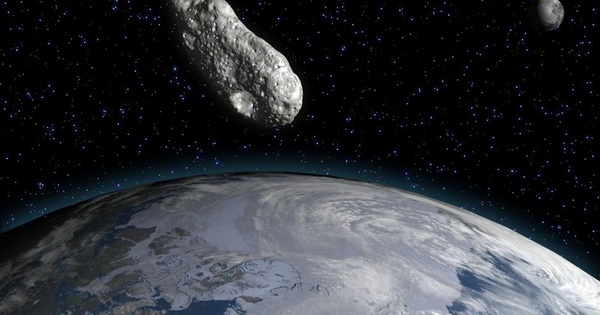Space mining, once confined to the realm of science fiction, is rapidly becoming a tangible reality as companies and governments race to establish a foothold in what could become a trillion-dollar industry.
Recent developments have accelerated the timeline for extracting valuable resources from celestial bodies, with NASA’s OSIRIS-REx mission successfully returning samples from asteroid Bennu in September 2023. The samples contained water-bearing clay minerals and carbon-rich compounds, re
...
Space mining, once confined to the realm of science fiction, is rapidly becoming a tangible reality as companies and governments race to establish a foothold in what could become a trillion-dollar industry.
Recent developments have accelerated the timeline for extracting valuable resources from celestial bodies, with NASA’s OSIRIS-REx mission successfully returning samples from asteroid Bennu in September 2023. The samples contained water-bearing clay minerals and carbon-rich compounds, reinforcing scientific theories about asteroids potentially containing precious metals and rare earth elements crucial for modern technology.
“What we’re seeing is a convergence of technological capability and economic incentive,” explains Dr. Sarah Chen, astrophysicist and consultant for several space mining ventures. “The cost of reaching space continues to decrease while demand for rare materials skyrockets due to green technology and electronics manufacturing.”
Industry analysts estimate that a single metal-rich asteroid could contain platinum group metals worth billions or even trillions of dollars. Asteroid 16 Psyche, scheduled for NASA exploration in 2026, is believed to contain metals worth potentially $10 quintillion, though extracting and returning these resources remains challenging.
Beyond precious metals, space mining ventures are targeting resources that could enable sustainable space exploration. Water ice, abundant on the Moon and certain asteroids, can be converted into rocket fuel, creating off-Earth refueling stations that would dramatically reduce mission costs and enable deeper space exploration.
Several private companies have emerged as frontrunners in the nascent industry. Asteroid Mining Corporation, based in the UK, is developing spacecraft capable of prospecting near-Earth asteroids. Meanwhile, California-based AstroForge plans to launch its first demonstration mission later this year to test refining capabilities in microgravity conditions.
Traditional mining conglomerates are also entering the arena. Rio Tinto recently established a Space Resources Division with a $25 million initial investment, partnering with several aerospace startups to develop extraction technologies adaptable to low-gravity environments.
The legal framework governing space mining remains contentious. The 1967 Outer Space Treaty, ratified by 111 countries including major spacefaring nations, established that space is not subject to “national appropriation.” However, the treaty predates commercial space activities and leaves significant ambiguity regarding private resource extraction.
The United States took a definitive stance with the 2015 Commercial Space Launch Competitiveness Act, which grants American companies rights to resources they extract from celestial bodies. Luxembourg followed with similar legislation in 2017 and has since invested over €200 million in space mining ventures, positioning itself as a European hub for the industry.
“We’re witnessing the development of a new legal regime for space resources,” says Professor Elena Vasquez, an expert in space law at Georgetown University. “Countries are increasingly recognizing that without legal certainty, investment in this sector will remain limited.”
The environmental implications of space mining are drawing attention from scientists and advocacy groups. While extracting resources from space could reduce environmentally destructive mining on Earth, concerns exist about potential contamination of pristine celestial environments and the creation of orbital debris.
“We need to establish environmental protection protocols before large-scale extraction begins,” argues Dr. James Henderson of the Space Sustainability Coalition. “The mistakes we’ve made in terrestrial mining shouldn’t be repeated in space.”
Technical challenges remain substantial. Current rocket technology limits payload returns, while remote operation of complex machinery presents significant engineering hurdles. Additionally, the extreme temperature fluctuations and radiation in space require specially designed equipment.
Despite these challenges, investment in space mining technologies continues to grow. Venture capital funding for space resource companies exceeded $800 million in 2022, a threefold increase from 2019, according to Space Capital’s quarterly reports.
National space agencies are also incorporating resource utilization into their long-term strategies. NASA’s Artemis program, aiming to return humans to the Moon by 2025, includes plans for demonstrating in-situ resource utilization. China’s space agency has similarly announced intentions to assess lunar resources as part of its Chang’e lunar exploration program.
Market analysts project that the first commercial space mining operations could begin within this decade, initially focusing on extracting water for fuel rather than returning materials to Earth. The establishment of permanent lunar bases, planned by several countries for the 2030s, would likely accelerate the development of local resource utilization.
“The first trillionaire will likely be made through space mining,” predicted Goldman Sachs in a recent report to investors, highlighting the industry’s enormous economic potential.
As technology advances and costs decrease, what once seemed like fantasy appears increasingly within reach. The coming decade will likely determine whether humanity can successfully expand its resource base beyond Earth, potentially transforming global economics and enabling a new era of space exploration.


